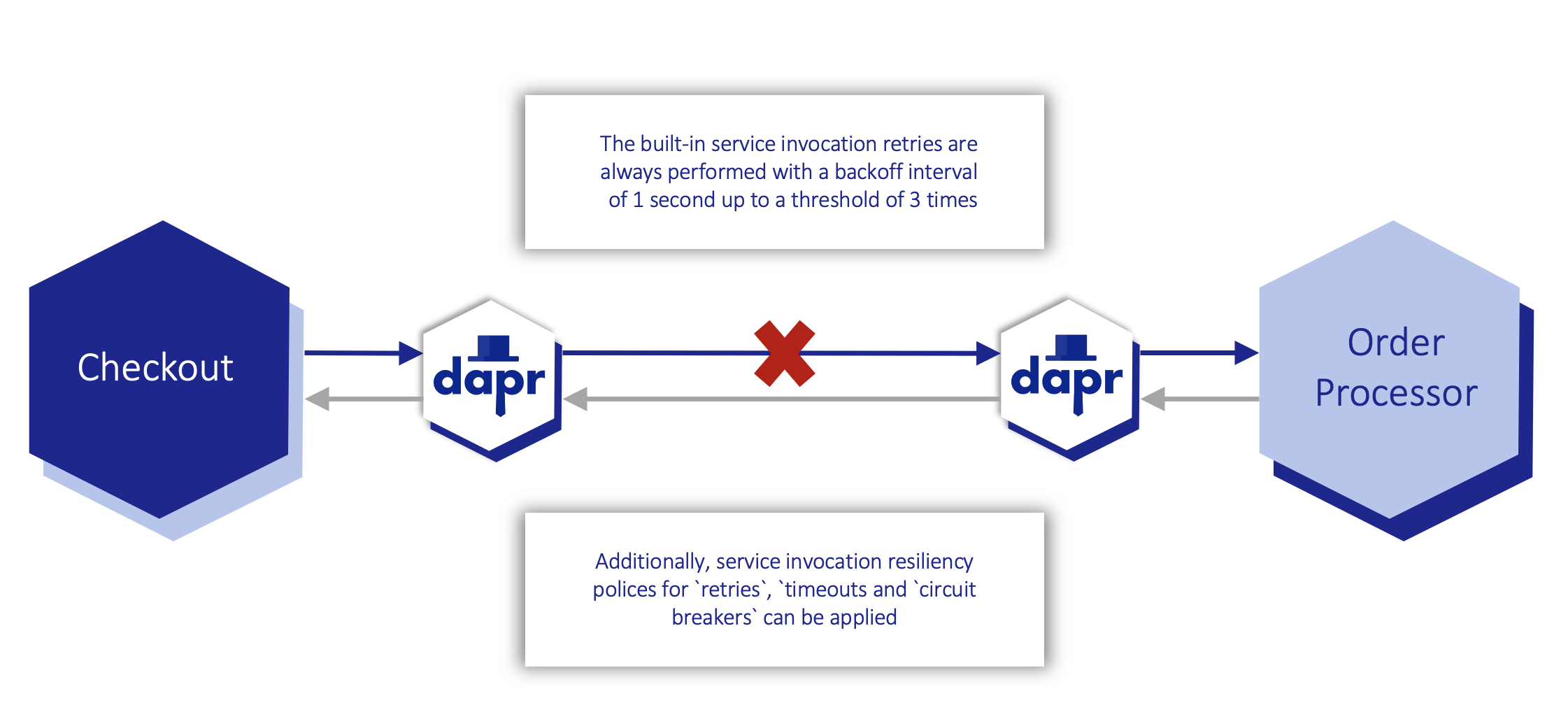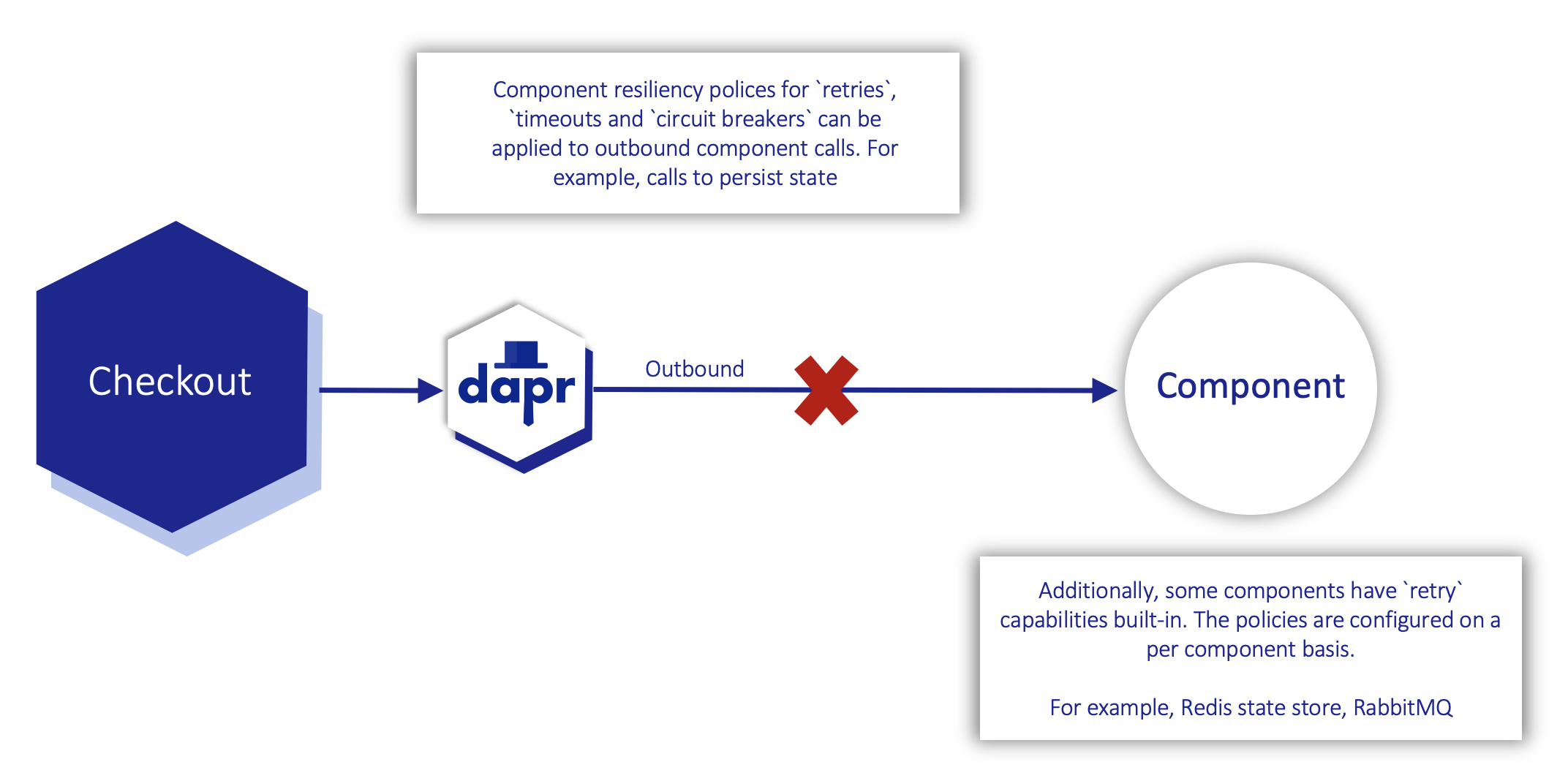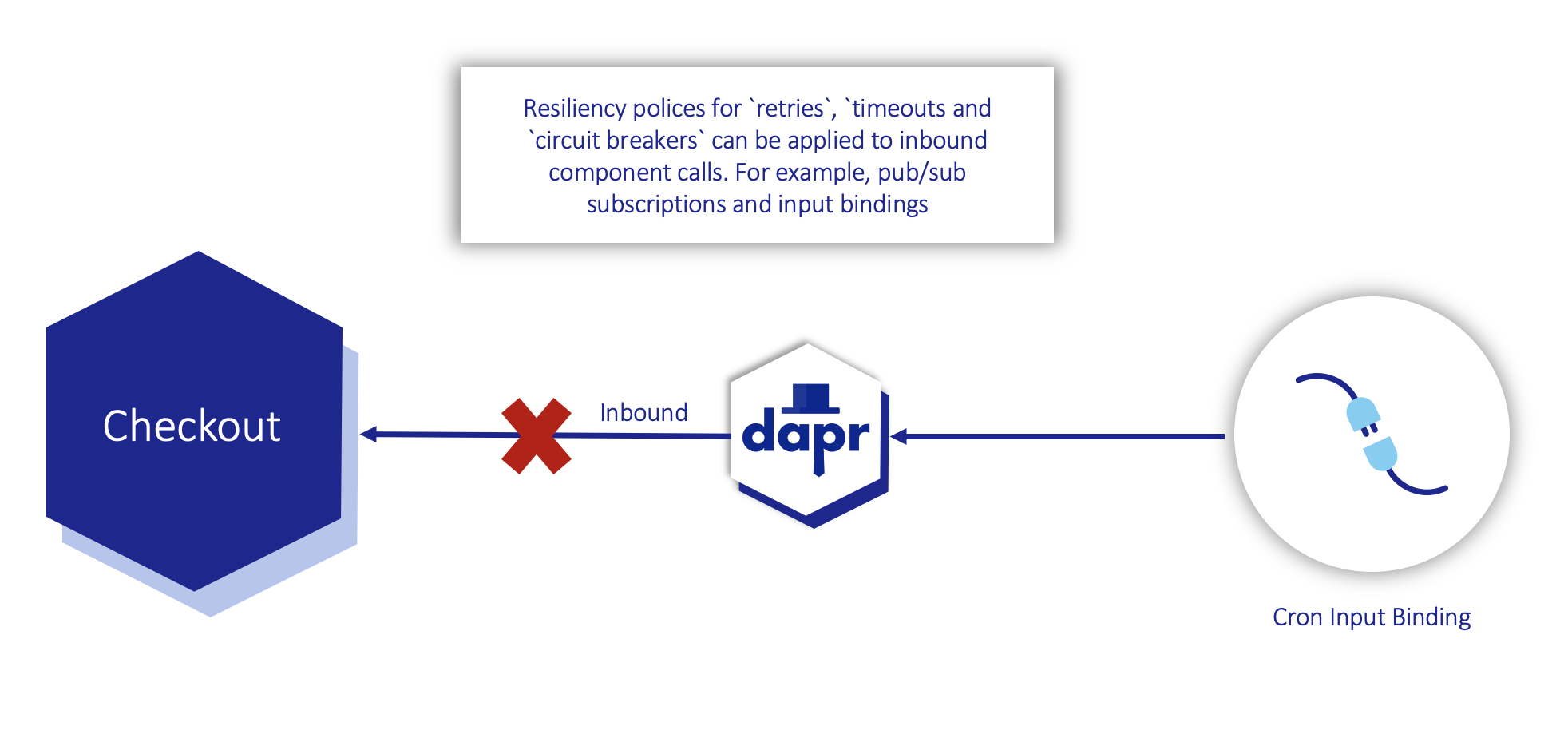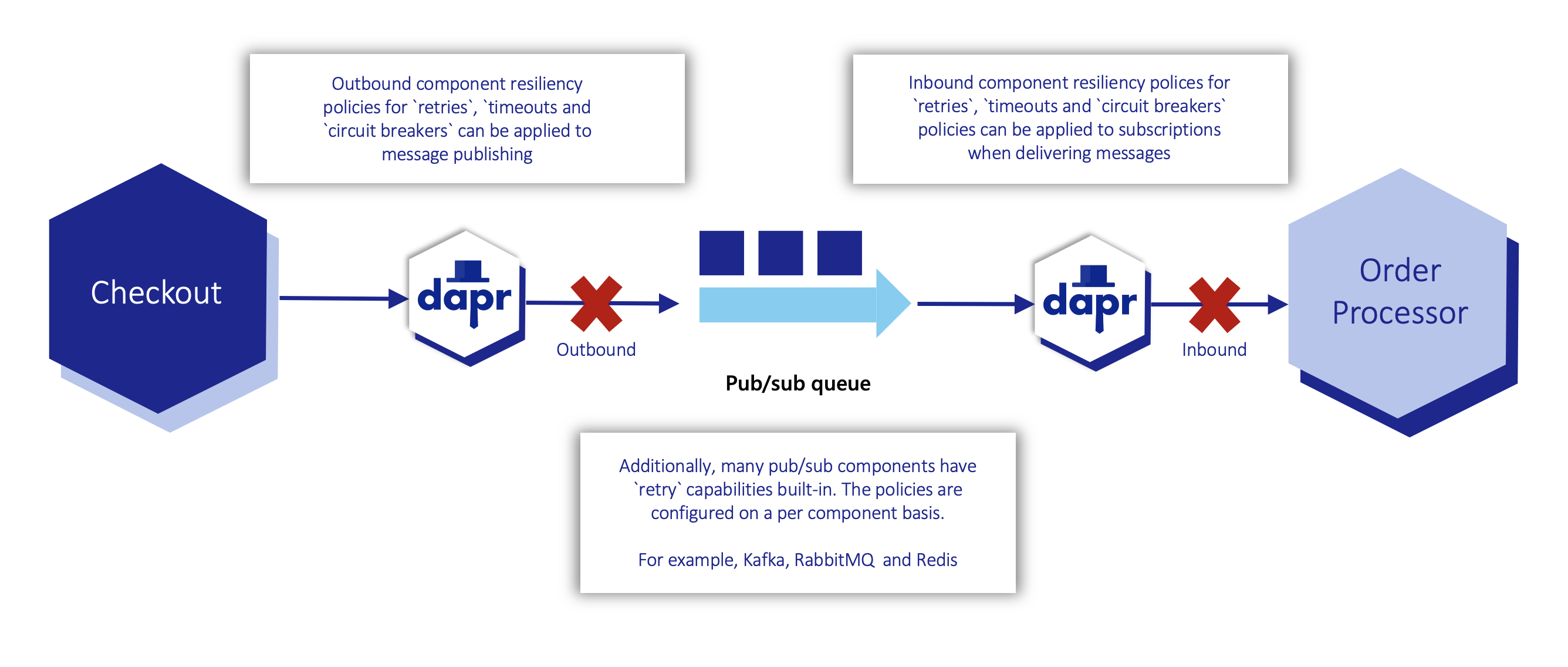The documentation you are viewing is for Dapr v1.8 which is an older version of Dapr. For up-to-date documentation, see the latest version.
Targets
Targets
Named policies are applied to targets. Dapr supports three target types that apply all Dapr building block APIs:
appscomponentsactors
Apps
With the apps target, you can apply retry, timeout, and circuitBreaker policies to service invocation calls between Dapr apps. Under targets/apps, policies are applied to each target service’s app-id. The policies are invoked when a failure occurs in communication between sidecars, as shown in the diagram below.
Dapr provides built-in service invocation retries, so any applied
retrypolicies are additional.

Example of policies to a target app with the app-id “appB”:
specs:
targets:
apps:
appB: # app-id of the target service
timeout: general
retry: general
circuitBreaker: general
Components
With the components target, you can apply retry, timeout and circuitBreaker policies to component operations.
Policies can be applied for outbound operations (calls to the Dapr sidecar) and/or inbound (the sidecar calling your app).
Outbound
outbound operations are calls from the sidecar to a component, such as:
- Persisting or retrieving state.
- Publishing a message.
- Invoking an output binding.
Some components may have built-in retry capabilities and are configured on a per-component basis.

spec:
targets:
components:
myStateStore:
outbound:
retry: retryForever
circuitBreaker: simpleCB
Inbound
inbound operations are calls from the sidecar to your application, such as:
- Subscriptions when delivering a message.
- Input bindings.
Some components may have built-in retry capabilities and are configured on a per-component basis.

spec:
targets:
components:
myInputBinding:
inbound:
timeout: general
retry: general
circuitBreaker: general
PubSub
In a PubSub target/component, you can specify both inbound and outbound operations.

spec:
targets:
components:
myPubsub:
outbound:
retry: pubsubRetry
circuitBreaker: pubsubCB
inbound: # inbound only applies to delivery from sidecar to app
timeout: general
retry: general
circuitBreaker: general
Actors
With the actors target, you can apply retry, timeout, and circuitBreaker policies to actor operations.
When using a circuitBreaker policy, you can specify whether circuit breaking state should be scoped to:
- An individual actor ID.
- All actors across the actor type.
- Both.
Specify circuitBreakerScope with values id, type, or both.
You can specify a cache size for the number of circuit breakers to keep in memory. Do this by specifying circuitBreakerCacheSize and providing an integer value, e.g. 5000.
Example
spec:
targets:
actors:
myActorType:
timeout: general
retry: general
circuitBreaker: general
circuitBreakerScope: both
circuitBreakerCacheSize: 5000
Feedback
Was this page helpful?
Glad to hear it! Please tell us how we can improve.
Sorry to hear that. Please tell us how we can improve.